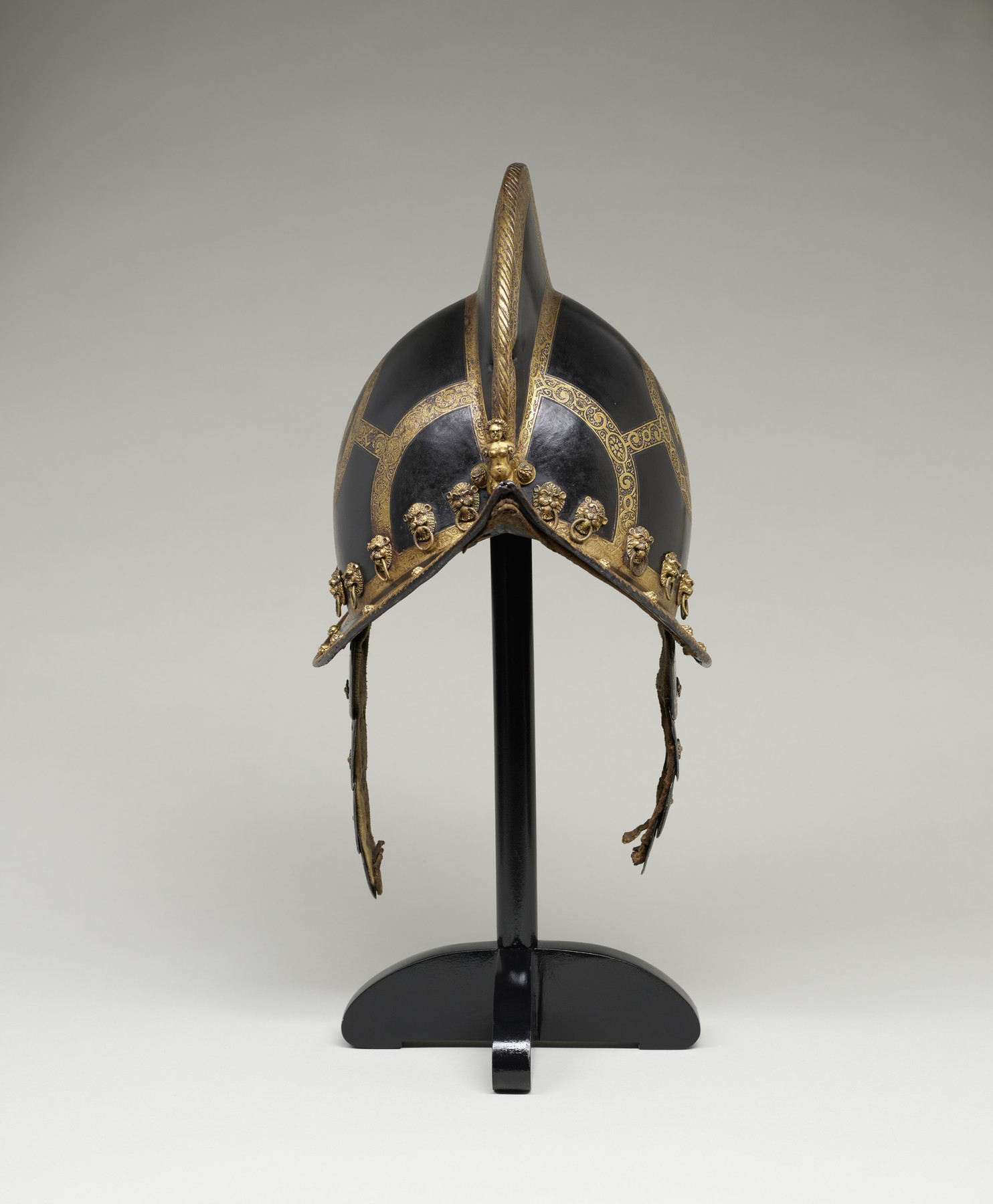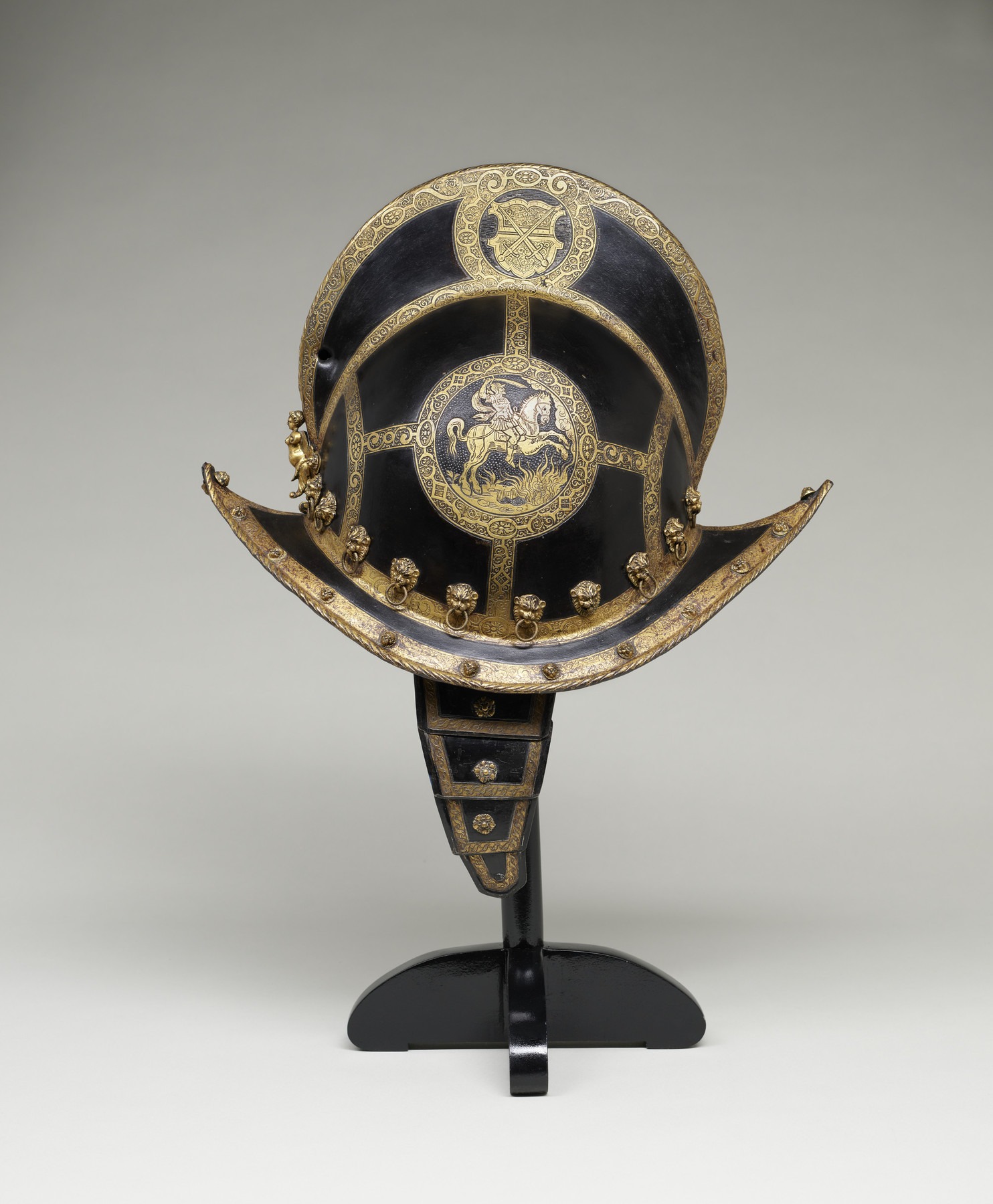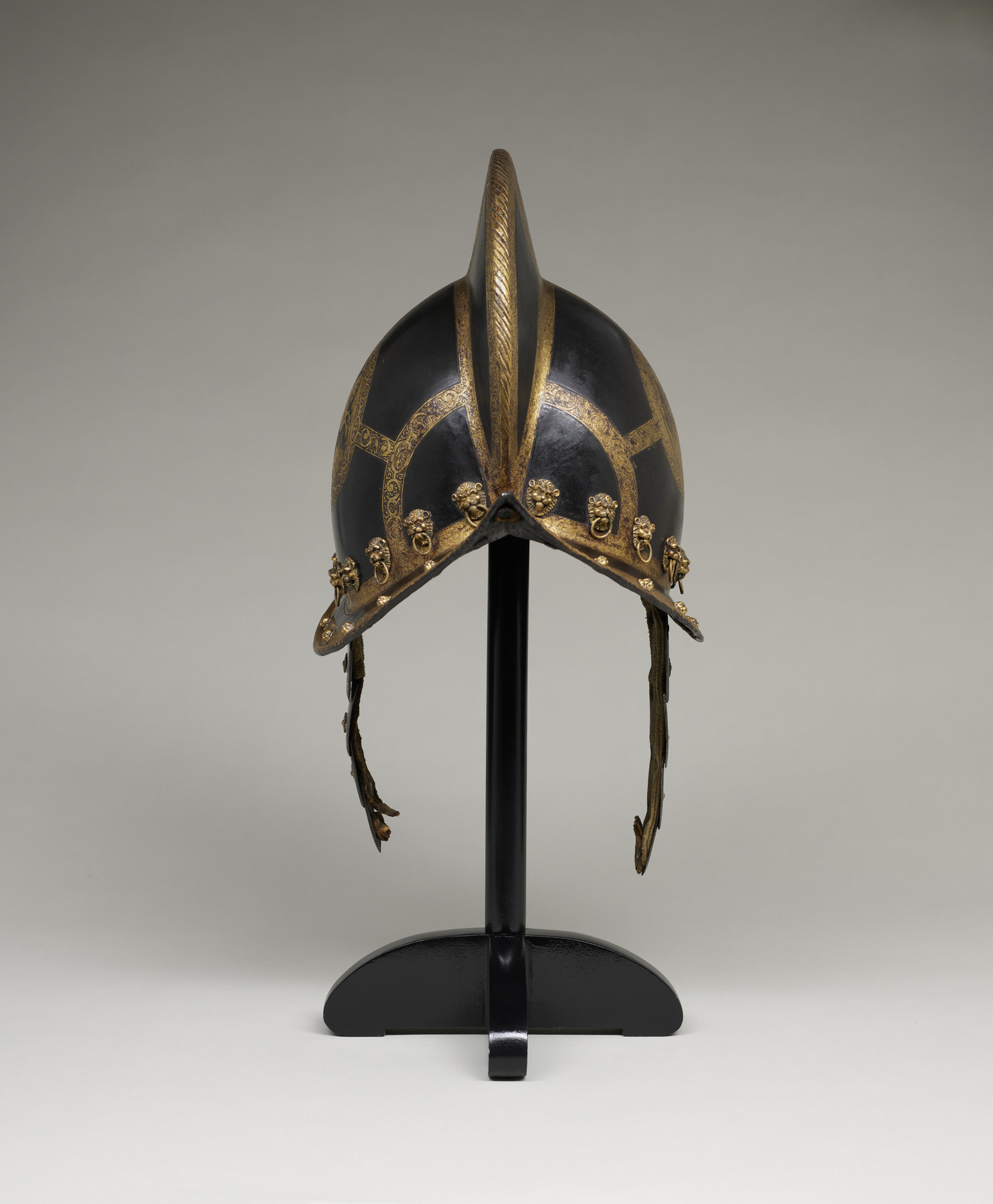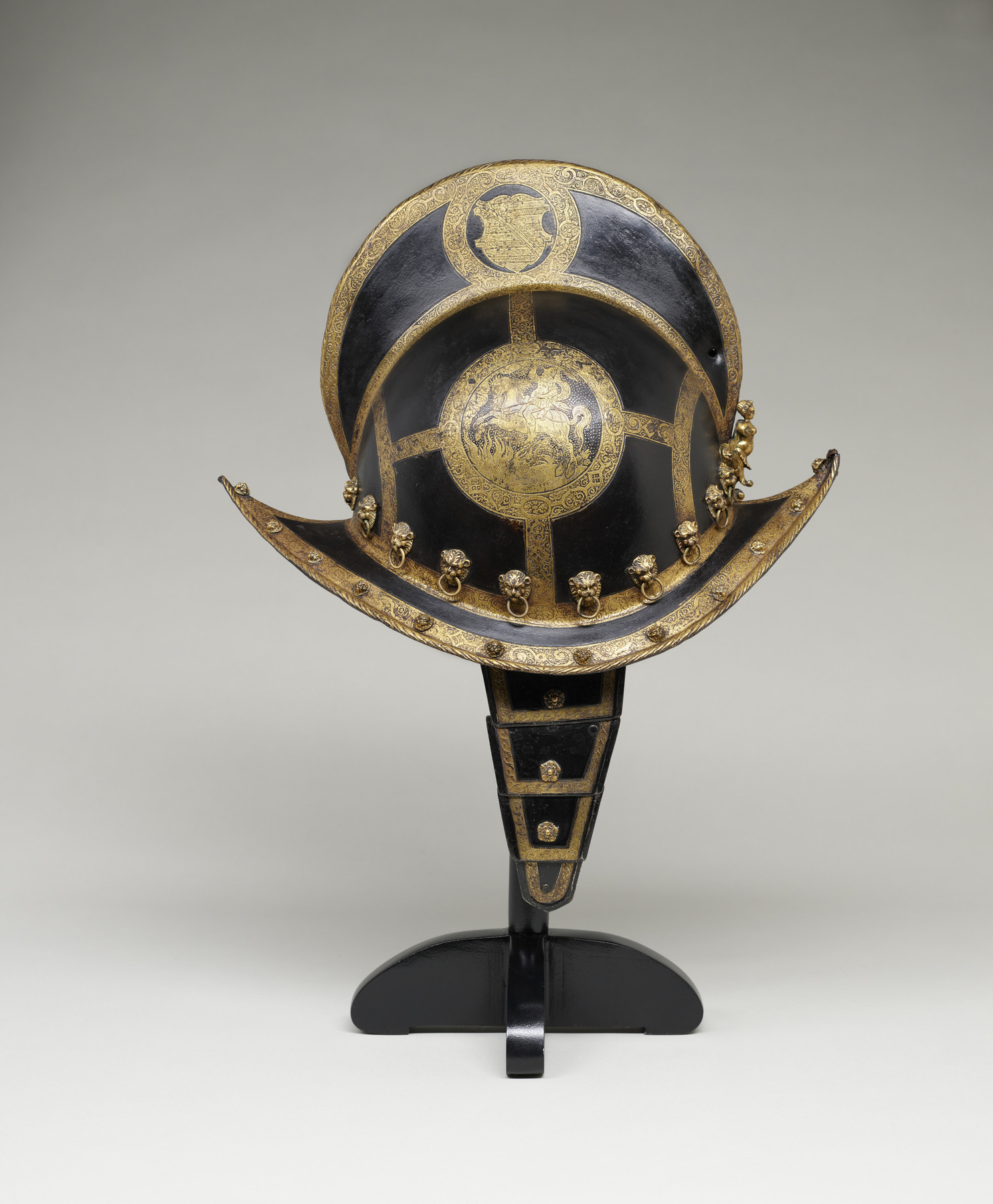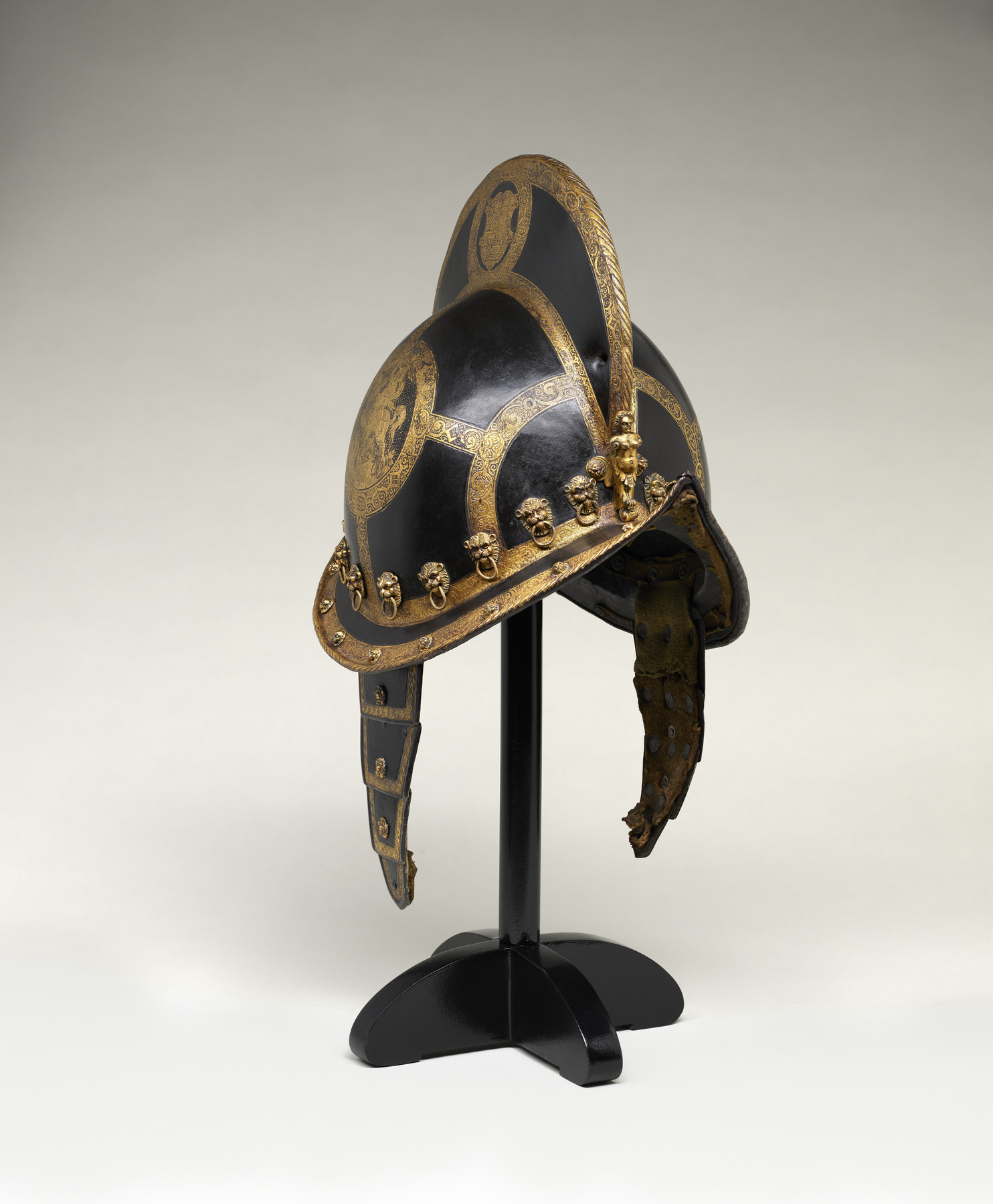Morion for the Guards of the Elector of Saxony
(Arms and Armor , Baroque Europe )
A morion is a light helmet for soldiers on foot or horseback with a distinctive comb along the top and an upturned brim. They are decorated with studs and often with etching, paint, and gilding. The image on this one represents the legendary Roman nobleman Marcus Curtius. When a chasm opened up in the center of ancient Rome, it was believed that it would not close until something of great value was thrown into it. The warrior sacrificed his life to protect Rome by riding his horse into the chasm, which then closed over them.
This morion was worn by a member of the bodyguard of the electors of Saxony in Dresden. The archduke of Saxony was one of the princes of the Holy Roman Empire who had a vote in the election of the emperor.
Provenance
Provenance (from the French provenir, 'to come from/forth') is the chronology of the ownership, custody, or location of a historical object. Learn more about provenance at the Walters.
Sale, American Art Association, New York, November 19, 1921, no. 305; Henry Walters, Baltimore, 1921, by purchase; Walters Art Museum, 1931, by bequest.
Conservation
| Date | Description | Narrative |
|---|---|---|
| 5/12/1969 | Treatment | cleaned |
| 12/16/2004 | Treatment | cleaned; repaired; coated; loss compensation |
Geographies
Germany, Augsburg (Place of Origin)
Measurements
11 13/16 in. (30 cm)
Credit Line
Acquired by Henry Walters, 1921
Location in Museum
Accession Number
In libraries, galleries, museums, and archives, an accession number is a unique identifier assigned to each object in the collection.
In libraries, galleries, museums, and archives, an accession number is a unique identifier assigned to each object in the collection.
51.472

